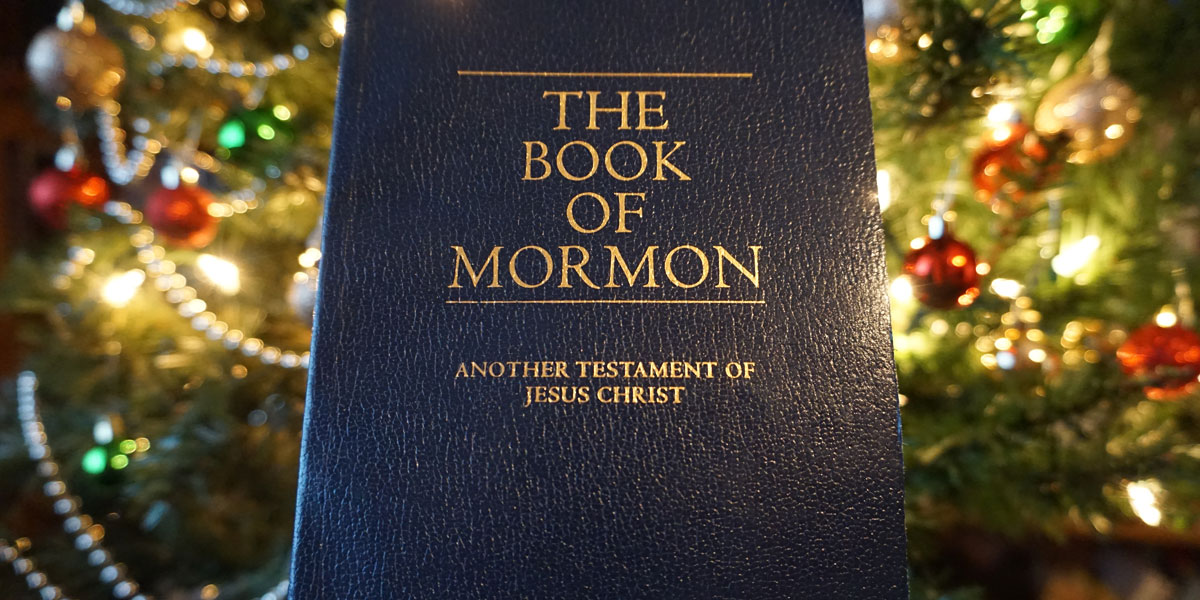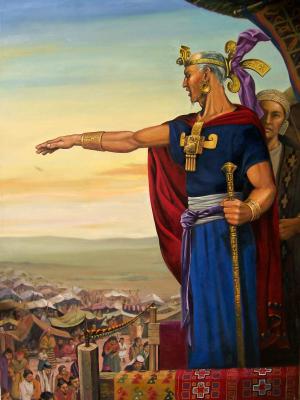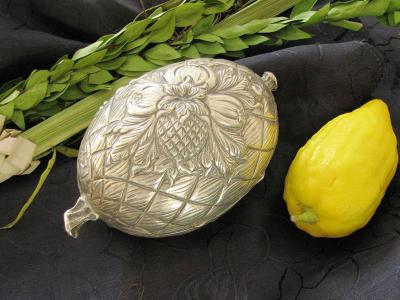
The Know
In the United States, the “holiday season,” encompassing Thanksgiving, Christmas, and the New Year, carries with it a special feeling. People try to be kinder, spend more time with family, and they try to have the “Holiday spirit.”
Although the people in the Book of Mormon did not celebrate Thanksgiving, Christmas, and New Year’s like people do today, they appear to have celebrated three similar holidays in close succession in their own sort of “holiday season.”1 These holidays were Rosh Hashana (the Israelite New Year), Yom Kippur (the Day of Atonement), and Sukkot (the Feast of Tabernacles).2
Terrence L. Szink and John W. Welch have stated that “the various components of the autumn festival were celebrated as a single season of celebration in the earliest periods of Israelite history.”3 It was only later on that its “many elements were … sharply differentiated.”4 King Benjamin’s speech “touches on all the major themes of these sacred days, treating them as parts of a single festival complex, consistent with what one would expect in a pre-exilic Israelite community in which the fall feasts were not sharply differentiated but were still closely associated as parts of one large autumn festival.”5
During Israelite New Year’s Day celebrations, for example, worshippers would offer sacrifices of animals that were of “the first year” (see Leviticus 23:24–25).6 This is what Benjamin’s people did. They brought “the firstlings of their flocks, that they might offer sacrifice and burnt offerings according to the law of Moses” (Mosiah 2:3).7 Both events celebrated God’s kingship as well. King Benjamin declared: “If I, whom ye call your king, … do merit any thanks from you, O how you ought to thank your heavenly King” (v. 19).8 Szink and Welch have noted that the Talmud and other Jewish and ancient Near Eastern literature similarly connect the idea of divine kingship directly to the New Year.9
Both the Israelite New Year and King Benjamin’s speech stress remembrance.10 In Leviticus 23:23–25, the event that is the equivalent of a New Year’s celebration is literally called a zikkaron (remembrance).11 The first six chapters of Mosiah alone mention some form of the word “remember” 15 times.12 King Benjamin’s speech and the Israelite New Year also focused on the king.13 Szink and Welch noted, “This was apparently the preferred time for the coronation of the king and the renewal of the people’s covenant to obey him and God.”14 During King Benjamin’s speech, Mosiah received his coronation (Mosiah 2:30), and the people all covenanted to obey the laws of the king and of God (Mosiah 5:5).15
King Benjamin’s speech also contains elements that reflect the Day of Atonement.16 Besides mentioning “atonement” seven times in his speech,17 Benjamin wove themes from the Day of Atonement into his message.18 According to Leviticus 16, the high priest was supposed to use the blood of the Day of Atonement sacrifice to cleanse the tabernacle.19
Benjamin’s references to “the atoning blood of Christ” (Mosiah 3:18) are likely allusions to this law.20
Another element of the Day of Atonement was that the priest would cleanse the people from various iniquities, especially from commandments violated in ignorance (Numbers 15:27–29).21
As King Benjamin put it, Christ, through His Atonement, can redeem “those … who have ignorantly sinned” (Mosiah 3:11).22
According to Szink and Welch, Leviticus 16:7–10 describes a ritual “in which the high priest, on the Day of Atonement, took two goats; by casting lots one goat was declared to be ‘for the Lord’ and the other” as a Scapegoat.23 They noted,
A similar dichotomy appears in Mosiah 5:7–12, in which the people are called either by the name of Christ and found belonging at the right hand of God, or are called “by some other name” and found at the left hand of God. According to later rabbinic tradition, if the lot “For the Lord” came up in the left hand it was permissible to switch the lots with their respective goats so that although the determination of which goat was the Lord’s was made by lot, the Lord’s goat would be on the right hand while [the other] would be on the left.24
Finally, Benjamin’s speech is similar to the Feast of Tabernacles (Sukkot).25 Deuteronomy 31:10–12 states that the people should gather as family units near the temple or tabernacle for this festival.26 Similarly, Benjamin’s people were instructed to “gather themselves together” (Mosiah 1:18), “every man according to his family” (Mosiah 2:5), “round about” the temple (v. 6).27 They also stayed in tents during this meeting (Mosiah 2:6).28 Welch and Szink have noted, “Tents were specifically mentioned in connection with the celebration of Solomon’s dedication of the temple … (1 Kings 8:65–66). This feast, in which tents were used, was held in the seventh month (see 1 Kings 8:2) and has generally been thought of as a Feast of Tabernacles.”29
Etrog, silver etrog box and lulav, used on the Jewish holiday of Sukkot. Photograph by Gilabrand via Wikimedia Commons
Also, according to Szink and Welch, ancient Israelites “renewed their covenant with God to be his people and to obey his laws” at the Feast of Tabernacles.30
“Benjamin’s people also enter into such a covenant, and they follow the form of covenant renewal in Israel in detail. Through this covenant, the people became the sons and daughters of God.”31
Also, “Jewish texts attest to the association between the king and the Feast of Tabernacles.”32 In these texts, “the king stands upon a specially constructed platform, and he is given a copy of the law from which he reads various passages from Deuteronomy … dealing with the law and covenant-making.”33 Standing on a tower reciting material related to covenant-making is exactly what one sees in King Benjamin’s speech.
The Why
Although it is impossible to know exactly how the people of King Benjamin were feeling when they were listening to his speech, we may be able to have some idea. If his speech was given during the Nephite “holiday season” as it seems to have been, it is possible that they were feeling the way we feel today during our autumn/early winter holiday season.
Sukkot, like our Thanksgiving, is a harvest festival, and would naturally lend itself to the feelings of gratitude for God’s blessings during the year that characterizes the modern holiday. Yom Kippur, for the Nephites, would have been a day when they looked forward with a feeling of reverence towards the sacrifice of the Savior, just as Christmas is for us. Rosh Hashanah, like our new year, is a time of hope and anticipation for the New Year. Although not exactly the same, perhaps the way we feel during the First Presidency Christmas Devotional is similar to the way they felt listening to King Benjamin’s speech, when these feelings combine to create a special holiday spirit.
As Szink and Welch explained, King Benjamin’s speech “makes good sense if one understands Benjamin’s speech as taking place during the season of the year when the Nephites would have been turning their hearts and minds to the kinds of themes and concerns that characterized this time of annual religious renewal and activity in ancient Israel.”34
Regardless of how the people actually felt during this speech, King Benjamin’s focus on Christ and on caring for one another reflects the essence of the “Christmas spirit.” May we all keep this spirit with us this holiday season, and always.
Further Reading
Terrence L. Szink and John W. Welch, “An Ancient Israelite Festival Context,” in King Benjamin’s Speech: “That Ye May Learn Wisdom” (Provo, UT: FARMS, 1998), 148–223.
John A. Tvedtnes, “King Benjamin and the Feast of Tabernacles,” in By Study and Also by Faith: Essays in Honor of Hugh W. Nibley, ed. John M. Lundquist and Stephen D. Ricks (Salt Lake City, UT: Deseret Book and FARMS, 1990), 2:197–237.
Allen J. Christenson, “Annual FARMS lecture: Maya Harvest Festivals and the Book of Mormon,” Review of Books on the Book of Mormon 3, no. 1 (1991): 1–31.
- 1. See Terrence L. Szink and John W. Welch, “An Ancient Israelite Festival Context,” in King Benjamin’s Speech: “That Ye May Learn Wisdom” (Provo, UT: FARMS, 1998), 159.
- 2. See Szink and Welch, “An Ancient Israelite Festival Context,” 150.
- 3. Szink and Welch, “An Ancient Israelite Festival Context,” 159.
- 4. Szink and Welch, “An Ancient Israelite Festival Context,” 159.
- 5. Szink and Welch, “An Ancient Israelite Festival Context,” 159.
- 6. See Szink and Welch, “An Ancient Israelite Festival Context,” 164.
- 7. Emphasis added. See Szink and Welch, “An Ancient Israelite Festival Context,” 164.
- 8. Szink and Welch, “An Ancient Israelite Festival Context,” 168–169.
- 9. See Szink and Welch, “An Ancient Israelite Festival Context,” 167–168.
- 10. See Szink and Welch, “An Ancient Israelite Festival Context,” 170.
- 11. See Szink and Welch, “An Ancient Israelite Festival Context,” 170.
- 12. See Eldin Ricks’s Thorough Concordance of the LDS Standard Works (Provo, UT: FARMS, 1995), 619–620.
- 13. For more on this, as well as other possible reasons for this stress on kingship, see Book of Mormon Central, “Why is the Theme of Kingship So Prominent in King Benjamin's Speech? (Mosiah 1:10),” KnoWhy 79 (April 15, 2016); Neal Rappleye, “King Noah and Maya Kingship,” at Studio et Quoque Fide: A Blog on Latter-day Saint Apologetics, Scholarship, and Commentary, August 21, 2016, online at studioetquoquefide.com; Lee L. Donaldson, “Benjamin and Noah: The Principle of Dominion” in Mosiah, Salvation Only Through Christ, Book of Mormon Symposium Series, Volume 5, ed. Monte S. Nyman and Charles D. Tate, Jr. (Provo UT: Religious Studies Center, Brigham Young University, 1991), 49–58.
- 14. Szink and Welch, “An Ancient Israelite Festival Context,” 170–171.
- 15. See Szink and Welch, “An Ancient Israelite Festival Context,” 172–173.
- 16. See Book of Mormon Central, “Why Does King Benjamin Emphasize the Blood of Christ? (Mosiah 4:2),” KnoWhy 82 (April 20, 2016).
- 17. See Mosiah 3:11, 15, 16, 18, 19; 4:6–7. For more on this, see Szink and Welch, “An Ancient Israelite Festival Context,” 174.
- 18. See Szink and Welch, “An Ancient Israelite Festival Context,” 176.
- 19. See Szink and Welch, “An Ancient Israelite Festival Context,” 176.
- 20. See Szink and Welch, “An Ancient Israelite Festival Context,” 176.
- 21. See Szink and Welch, “An Ancient Israelite Festival Context,” 176–177.
- 22. See Szink and Welch, “An Ancient Israelite Festival Context,” 177.
- 23. See Szink and Welch, “An Ancient Israelite Festival Context,” 177.
- 24. See Szink and Welch, “An Ancient Israelite Festival Context,” 177–178.
- 25. See Book of Mormon Central, “Why Did the Nephites Stay in Their Tents During King Benjamin’s Speech? (Mosiah 2:6),” KnoWhy 80 (April 18, 2016); John A. Tvedtnes, “King Benjamin and the Feast of Tabernacles,” in By Study and Also by Faith: Essays in Honor of Hugh W. Nibley, ed. John M. Lundquist and Stephen D. Ricks (Salt Lake City, UT: Deseret Book and FARMS, 1990), 2:197–237.
- 26. See Szink and Welch, “An Ancient Israelite Festival Context,” 184.
- 27. See Szink and Welch, “An Ancient Israelite Festival Context,” 184.
- 28. It seems that these tents were more than just a place to stay while the people were gathering to listen to Benjamin’s speech. Szink and Welch have noted that “Everyone had a tent, not just those who had come from out of town and needed a place to stay. Furthermore, they all remained in their tents during the speech, surely for ceremonial reasons. If it had not been religiously and ritually important for them to stay in their tents, the crowd could have stood much closer to Benjamin and been able to hear him, obviating the need for written copies of his words to be prepared and circulated (see Mosiah 2:8). Apparently Benjamin considered it more important for the people to remain in their tents than to have them stand within close hearing distance of the speaker.” See Szink and Welch, “An Ancient Israelite Festival Context,” 185–186.
- 29. Szink and Welch, “An Ancient Israelite Festival Context,” 185.
- 30. See Szink and Welch, “An Ancient Israelite Festival Context,” 187.
- 31. See Szink and Welch, “An Ancient Israelite Festival Context,” 187. See also Mosiah 5:1–7; compare Exodus 19:5; Jeremiah 31:33; Nehemiah 7:73–8:18; 9:1–13:31.
- 32. Szink and Welch, “An Ancient Israelite Festival Context,” 188.
- 33. Szink and Welch, “An Ancient Israelite Festival Context,” 188.
- 34. See Szink and Welch, “An Ancient Israelite Festival Context,” 160.
Continue reading at the original source →





